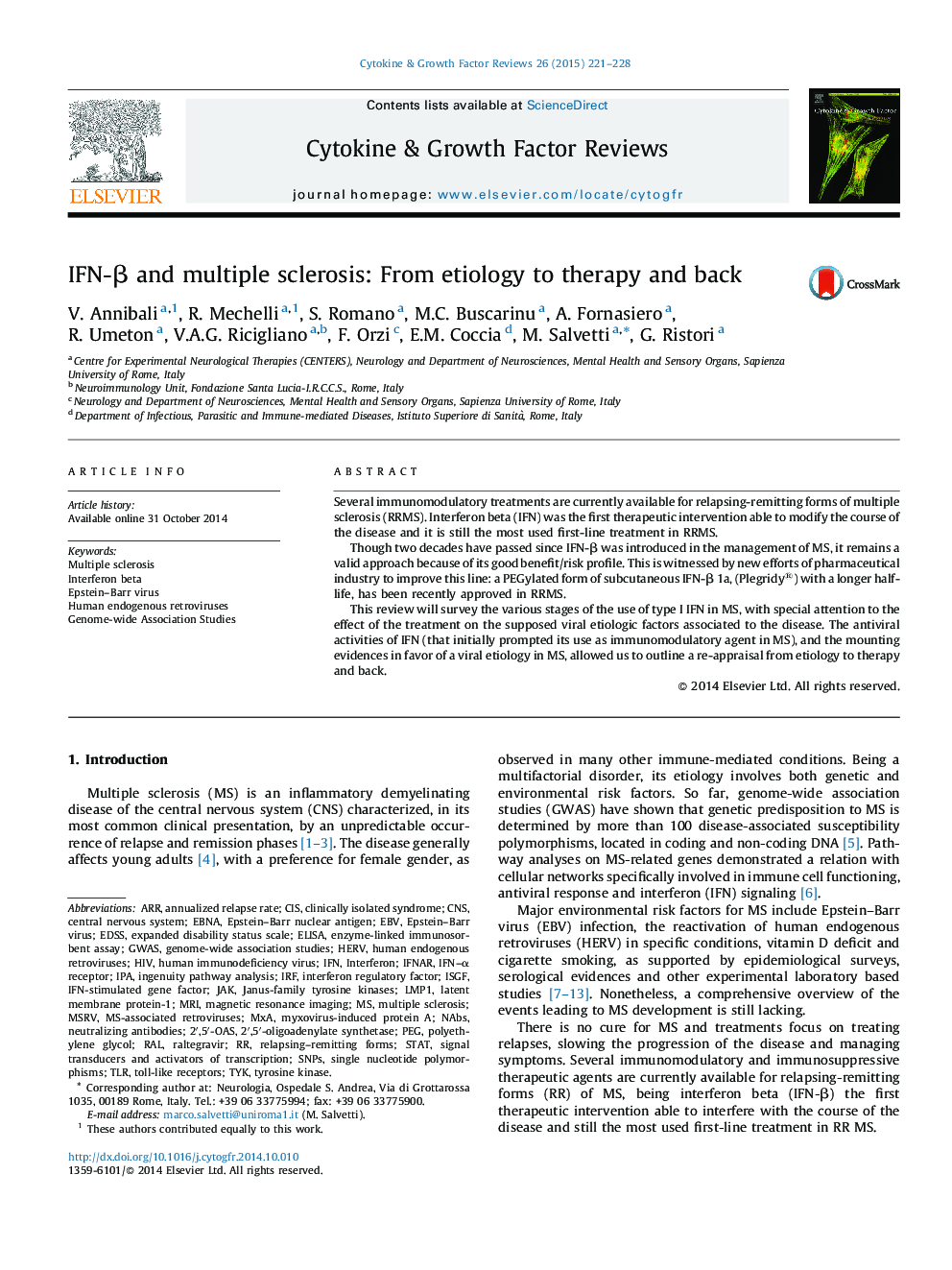| Article ID | Journal | Published Year | Pages | File Type |
|---|---|---|---|---|
| 2170505 | Cytokine & Growth Factor Reviews | 2015 | 8 Pages |
•The various stages of the use of type I interferon in multiple sclerosis were reviewed.•We focused on the possible effects of the treatment on the supposed viral etiologic factors that have been associated to multiple sclerosis.•An analysis was performed to compare multiple sclerosis-associated genes and components of the interferon-beta pathway.
Several immunomodulatory treatments are currently available for relapsing-remitting forms of multiple sclerosis (RRMS). Interferon beta (IFN) was the first therapeutic intervention able to modify the course of the disease and it is still the most used first-line treatment in RRMS.Though two decades have passed since IFN-β was introduced in the management of MS, it remains a valid approach because of its good benefit/risk profile. This is witnessed by new efforts of pharmaceutical industry to improve this line: a PEGylated form of subcutaneous IFN-β 1a, (Plegridy®) with a longer half-life, has been recently approved in RRMS.This review will survey the various stages of the use of type I IFN in MS, with special attention to the effect of the treatment on the supposed viral etiologic factors associated to the disease. The antiviral activities of IFN (that initially prompted its use as immunomodulatory agent in MS), and the mounting evidences in favor of a viral etiology in MS, allowed us to outline a re-appraisal from etiology to therapy and back.
